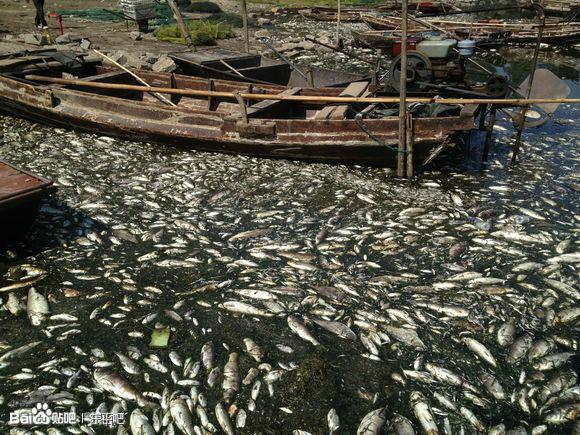Shandong Province fish farmers saw their livelihood evaporate in June as their lake water blackened and emitted a putrid stench.
Over a hundred of these fishermen lost a total of over US$8 million as several hundred pounds of fish died in the polluted waters.
“There may be some fish in other villages, but the fish in this village are dead,” commented a female farmer, surname Gu, who has lost over 400,000 yuan ($65,212), according to Sound of Hope Radio (SOH), an independent Chinese-language broadcaster.
“Over 95 percent of fish have perished,” a villager surnamed Lee told SOH.
Villagers tried to appeal for the authorities to stop dumping polluted water into the lake, but police responded by arresting over ten villagers and having sixty local authorities blockade the roads.
The dumping of contaminated water that has killed so many fish is one of many components of the South-North Water Transfer Project, China’s plan to redistribute water to the North to balance out water scarcity. The project’s eastern and central routes will cross many polluted, dead fish and sewage-ridden channels and multiple hotspots for cancerous outbreaks.
For example, the Danjiangkou reservoir that runs between Hubei and Hunan Province has garbage and feces piled up to the surface, according to an economics program on state-run CCTV. As the foundation of the project, the reservoir’s quality determines the quality of water flowing downstream, indicating the project has been contaminated from the start.
And in Shaanxi Province, a broken sedimentation tank that hasn’t been repaired for years dumps urban sewage directly into the river.
The Chinese regime has spent 500 billion yuan ($81.5 billion) on the project, in what is the world’s biggest and, simultaneously, most cancer-causing water project, according to the Hong Kong-based Oriental Daily News. By next year, hundreds of thousands of families living in Beijing and other major northern cities will be drinking from contaminated water blamed for cancer hot spots in locations throughout China.
All major cities in China will have to abandon their current water sources within the next ten years due to severe pollution, according to Ma Zhong, an environment professor at Renmin University in China, cited by CCTV. More than half of China’s 709 water sources fall below the standards for drinking water.
A research fellow at the Chinese Research Academy of Environmental Sciences, Zhao Zhangyuan, blamed water pollution on the failure of local environmental agencies to do their duty.
“There is a long way to go before the water quality in the project can be guaranteed,” one of the project’s directors, Zhang Jiyao, admitted to regime media.
The idea for the South-North Water Transfer Project dates back to Mao Zedong, first dictator of the Chinese Communist Party, who commented that “since the south has a great deal of water, and the north very little, we should borrow some of it.” But it was former Party leader Jiang Zemin, desiring historical recognition, who proposed plans for the project. Construction on the eastern route began in 2002 and on the central route in 2003.
On July 3, a netizen criticized the South-North Water Transfer Project on Sina Weibo, China’s Twitter-like platform, in a post that was reblogged more than 15,000 times.
According to the netizen, the project has only exacerbated water pollution and caused greater problems for fishermen. “All wild fish in the lake have died,” the netizen wrote, “Fishermen cry their hearts out while villagers try to speak to the local government to no avail.”
Instead, the local regime fishing agency is pushing for fish farmers to take up breeding animals. According to the state-run Shandong Qilu Evening News, which neglects to mention pollution, citizens must quit fishing to safeguard the water quality.
Translation by Frank Fang and Billy Xu. Research by Li Xia.




